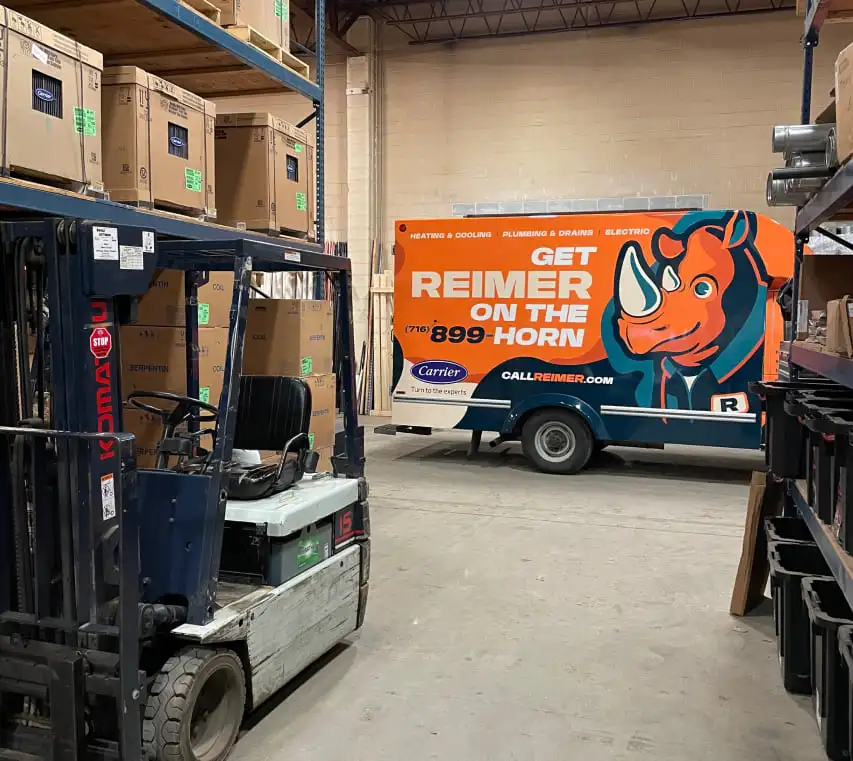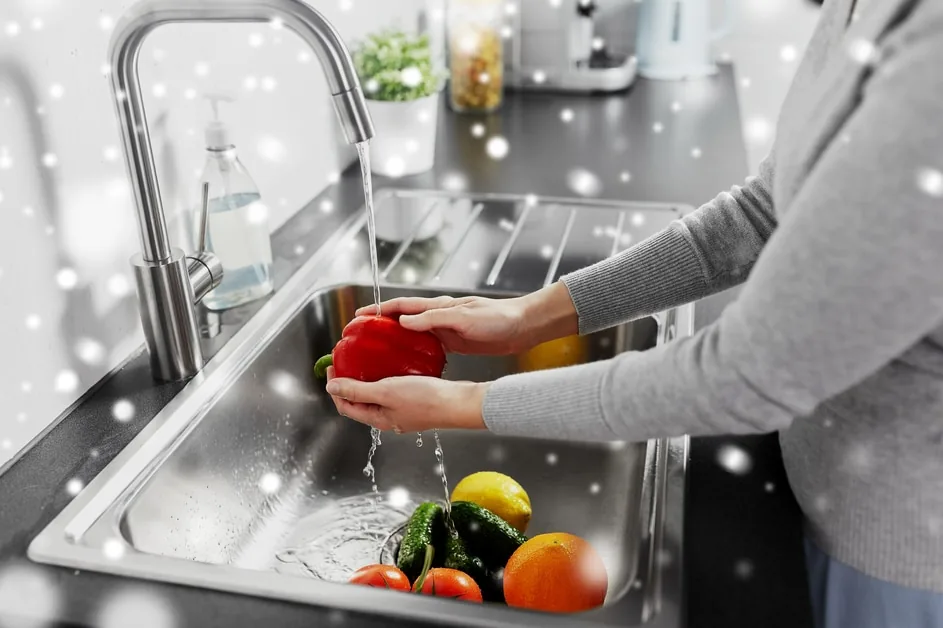As energy consumption and its environmental impact continue to be pressing concerns, homeowners are seeking ways to maximize energy efficiency while maintaining a comfortable living environment.
Buffalo, New York has emerged as a model city for clean energy, with a strong focus on energy efficiency and research and development in clean energy technologies.
One of the reasons for Buffalo’s success in promoting clean energy is the widespread use of Energy Recovery Ventilators (ERVs) and Heat Recovery Ventilators (HRVs) in residential buildings.
These ventilation systems not only improve indoor air quality but also make efficient use of energy. If you are a homeowner in Buffalo, this article will help you understand the differences between ERVs and HRVs, allowing you to make an informed decision about the most suitable ventilation system for your home.
What are ERVs and HRVs?
Energy Recovery Ventilators (ERVs) and Heat Recovery Ventilators (HRVs) are mechanical ventilation systems that play a vital role in improving indoor air quality and reducing energy costs in residential buildings. These systems work by exchanging stale indoor air with fresh outdoor air while recovering energy from the exhaust air.
ERVs and HRVs operate on the principle of heat and moisture transfer. They consist of a heat exchanger core that allows the exchange of heat and humidity between the outgoing and incoming air streams, while preventing the mixing of the two streams. This core is typically made of a high-conductivity material, such as aluminum, and is divided into separate channels for the supply and exhaust air.
During the ventilation process, the stale indoor air and fresh outdoor air pass through the separate channels of the heat exchanger. As the air streams pass each other, heat and moisture are transferred from the outgoing air to the incoming air. In the case of an ERV, the heat exchanger also dehumidifies the incoming air, reducing its moisture content before it enters the home. This helps maintain optimal humidity levels indoors.
The benefits of investing in ERVs and HRVs are significant and can greatly enhance the indoor environment of a home. Here are some key advantages:
- Improved Indoor Air Quality: ERVs and HRVs provide a constant supply of fresh outdoor air, ensuring a continuous exchange of stale indoor air. This helps remove indoor pollutants, allergens, and odors, creating a healthier living environment for occupants.
- Energy Efficiency: By recovering heat from the exhaust air, both ERVs and HRVs help to reduce the amount of energy required to heat or cool the incoming fresh air. This energy recovery process can significantly lower heating and cooling costs, resulting in long-term energy savings.
- Balanced Humidity Levels: ERVs and HRVs help regulate indoor humidity levels by transferring moisture from the outgoing air to the incoming air. In humid climates, ERVs reduce excess humidity, preventing the growth of mold and mildew. In drier climates, HRVs help retain moisture in the air, improving comfort and reducing the risk of dry skin and respiratory issues.
- Enhanced Comfort: The continuous supply of fresh air provided by ERVs and HRVs helps maintain a more comfortable indoor environment by reducing stuffiness and improving air circulation. These systems also minimize drafts and cold spots, resulting in a more consistent temperature throughout the home.
- Noise Reduction: ERVs and HRVs often incorporate sound insulation materials and advanced fan designs, reducing noise levels during operation. This ensures a quiet and peaceful living environment.
- Environmental Sustainability: By optimizing energy consumption and reducing the reliance on heating and cooling systems, ERVs and HRVs contribute to a more sustainable living environment. They help minimize carbon emissions and support eco-friendly practices.
ERV vs HRV
ERVs and HRVs are both mechanical ventilation systems that play a crucial role in improving indoor air quality and energy efficiency in residential buildings.
While they share the same goal of providing fresh air and recovering energy from the exhaust air, there are key differences between ERVs and HRVs.
In this detailed comparison, we will delve into these differences, helping you make an informed decision about which system is best suited for your home.
Heat and Moisture Transfer:
ERVs and HRVs operate on the principle of heat and moisture transfer, but they handle these aspects differently.
ERVs focus on transferring both heat and moisture between the outgoing and incoming air streams, ensuring a balanced humidity level in the home. This is particularly beneficial in climates with high humidity levels, as ERVs help reduce excess moisture and prevent the growth of mold and mildew.
HRVs, on the other hand, primarily focus on heat transfer and do not transfer moisture between the air streams. They are more suitable for climates where humidity control is not a significant concern.
Humidity Control:
One of the key advantages of ERVs is their ability to regulate humidity levels. They help maintain optimal indoor humidity by transferring moisture from the outgoing air to the incoming air.
In humid climates, ERVs remove excess humidity, preventing the growth of mold and creating a more comfortable living environment.
In drier climates, HRVs can help retain moisture in the air, improving comfort and reducing the risk of dry skin and respiratory discomfort.
Efficiency in Different Climates:
ERVs are particularly effective in humid climates, where they can help reduce the load on air conditioning systems by removing excess moisture from the incoming air.
By balancing humidity levels, ERVs contribute to energy savings and improved comfort. HRVs, on the other hand, are more suitable for climates where humidity control is less of a concern and where the focus is primarily on heat transfer.
They help retain heat in the winter and remove heat in the summer, contributing to energy efficiency throughout the year.
Energy Recovery:
Both ERVs and HRVs are designed to recover energy from the exhaust air, reducing the energy required to heat or cool the incoming fresh air. This energy recovery process leads to significant energy savings and lower heating and cooling costs. By exchanging heat between the outgoing and incoming air streams, both systems help maintain a more comfortable indoor temperature while reducing the workload on HVAC systems.
System Design:
In terms of system design, ERVs and HRVs have some differences. ERVs often have additional components, such as humidity sensors and moisture transfer membranes, to facilitate the transfer of moisture between the air streams. These components make ERVs more suitable for managing humidity levels in the home.
HRVs, on the other hand, are designed primarily for heat transfer and may have simpler designs without the additional components required for moisture transfer.
Application and Home Requirements:
The choice between ERVs and HRVs depends on several factors, including climate, home size, and specific requirements.
If you live in a humid climate, have concerns about excess moisture, or want to maintain balanced humidity levels in your home, an ERV may be the ideal choice. ERVs are also recommended for homes with a higher occupancy or where there is a need for better control over humidity.
HRVs, on the other hand, are suitable for climates where humidity control is not a significant concern and where the focus is primarily on heat transfer.
Both ERVs and HRVs offer valuable benefits in terms of improving indoor air quality, energy efficiency, and comfort in residential buildings. ERVs excel in managing humidity levels and are well-suited for humid climates, while HRVs focus primarily on heat transfer and are suitable for climates where humidity control is less of a concern.
Consulting with a professional will help you determine the most suitable system for your home based on factors such as climate, home size, and specific requirements. By selecting the appropriate ventilation system, you can enjoy fresh, clean air, energy savings, and a comfortable living environment in your home.
Count on Reimer HVAC for Your Ventilation Needs!
When it comes to ERVs and HRVs, Reimer HVAC is your trusted partner in ensuring optimal indoor air quality and energy efficiency in your home. Our team of experienced professionals understands the unique characteristics of these ventilation systems and can guide you in making the right choice for your specific needs.
We offer comprehensive services, including installation, maintenance, and repairs, to keep your ventilation system running smoothly and effectively. Our technicians are trained to assess your home’s requirements, taking into account factors such as climate, home size, and occupancy, to recommend the most suitable system for you.
At Reimer HVAC, we prioritize your comfort and sustainability. Our services are designed to minimize energy waste, reduce environmental impact, and extend the lifespan of your ventilation system. We believe in catching minor issues early on through regular maintenance, preventing them from becoming costly problems down the line.
By choosing Reimer HVAC, you’re not only ensuring excellent service and optimal performance for your ventilation system but also contributing to a more sustainable Buffalo. Our commitment to reducing carbon emissions and promoting energy efficiency aligns with the city’s clean energy initiatives.
Contact us today to schedule an appointment and experience the difference of working with a reliable and environmentally conscious HVAC company. Trust Reimer HVAC for all your ventilation needs and enjoy cleaner, fresher air and energy savings in your home.





